Abstract
1. Frog toe muscles and isolated fibres from frog semitendinosus muscles were allowed to develop maximum K-contractures, and after reaching peak tension were transferred to media containing intermediate [K]0 (20-40 mM-K). Under these circumstances, relaxation displayed an early rapid phase, and a subsequent slower phase whose magnitude and rate varied with [K]0. The removal of activator (calcium ion) from the sarcoplasm appears to have a potential-dependent component.
2. The relation between relaxation and [K]0 suggests that, with progressive depolarization, membrane sites from which calcium is initially released become converted into sites which are again capable of binding calcium and removing it from the sarcoplasm.
3. The rate of relaxation of frog toe muscle after maximum K-contractures can be either accelerated or retarded by abrupt alterations in [Ca]0 or by sudden replacement of the major extracellular anion. These effects are attributed to shifts in the relation between calcium rebinding and membrane potential.
Full text
PDF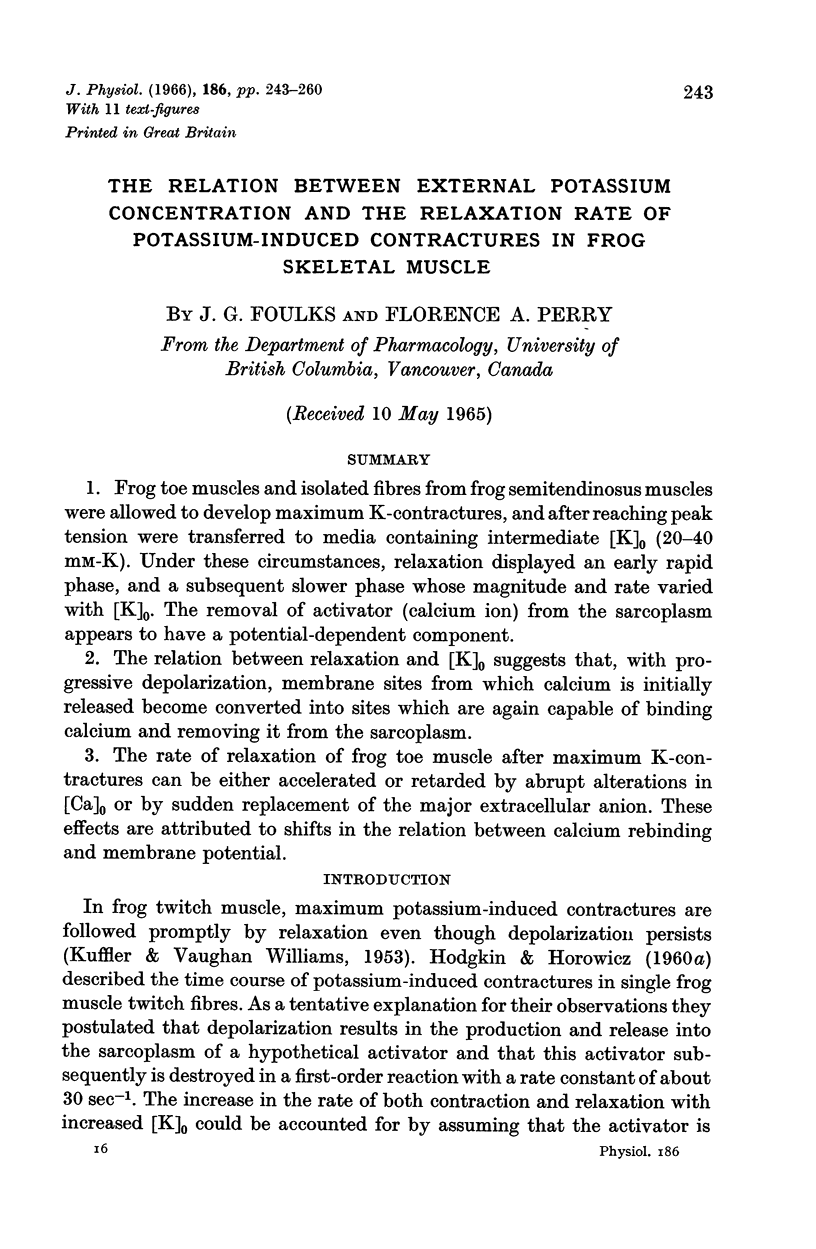

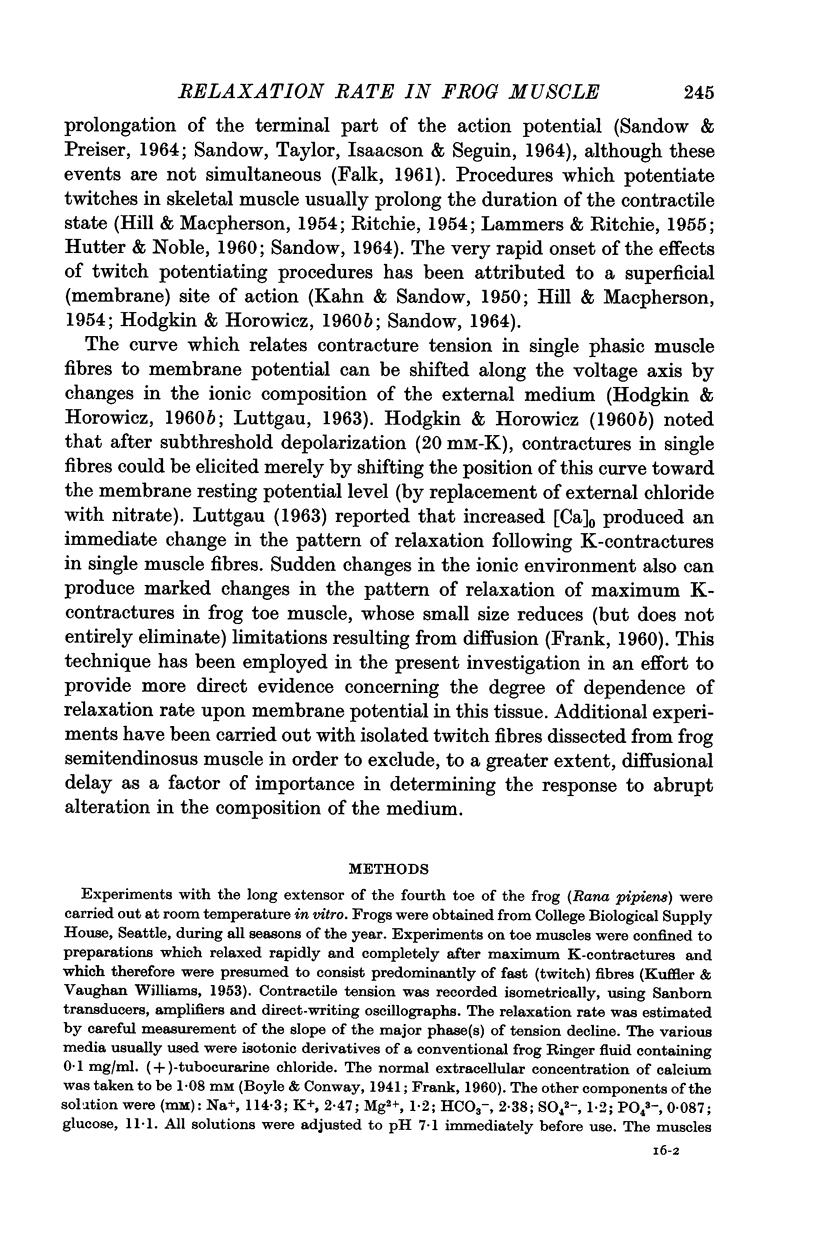
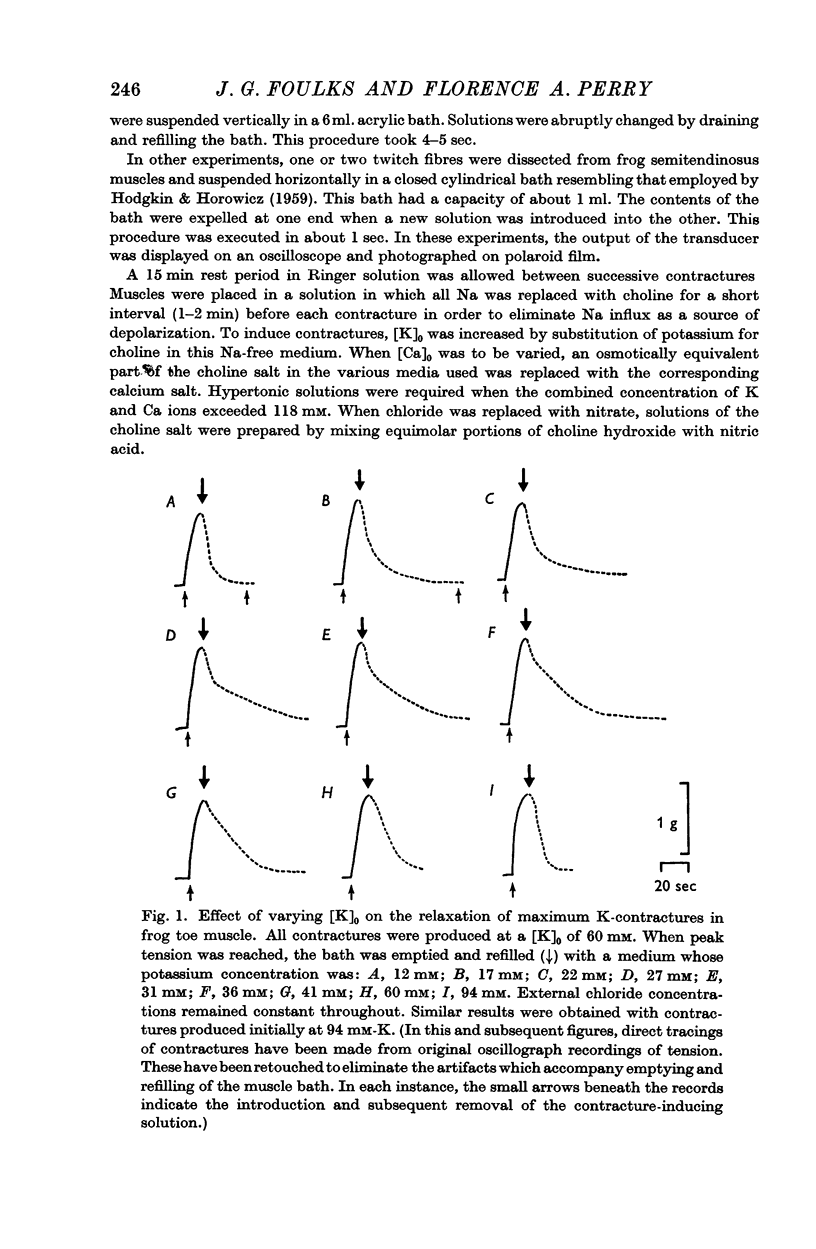
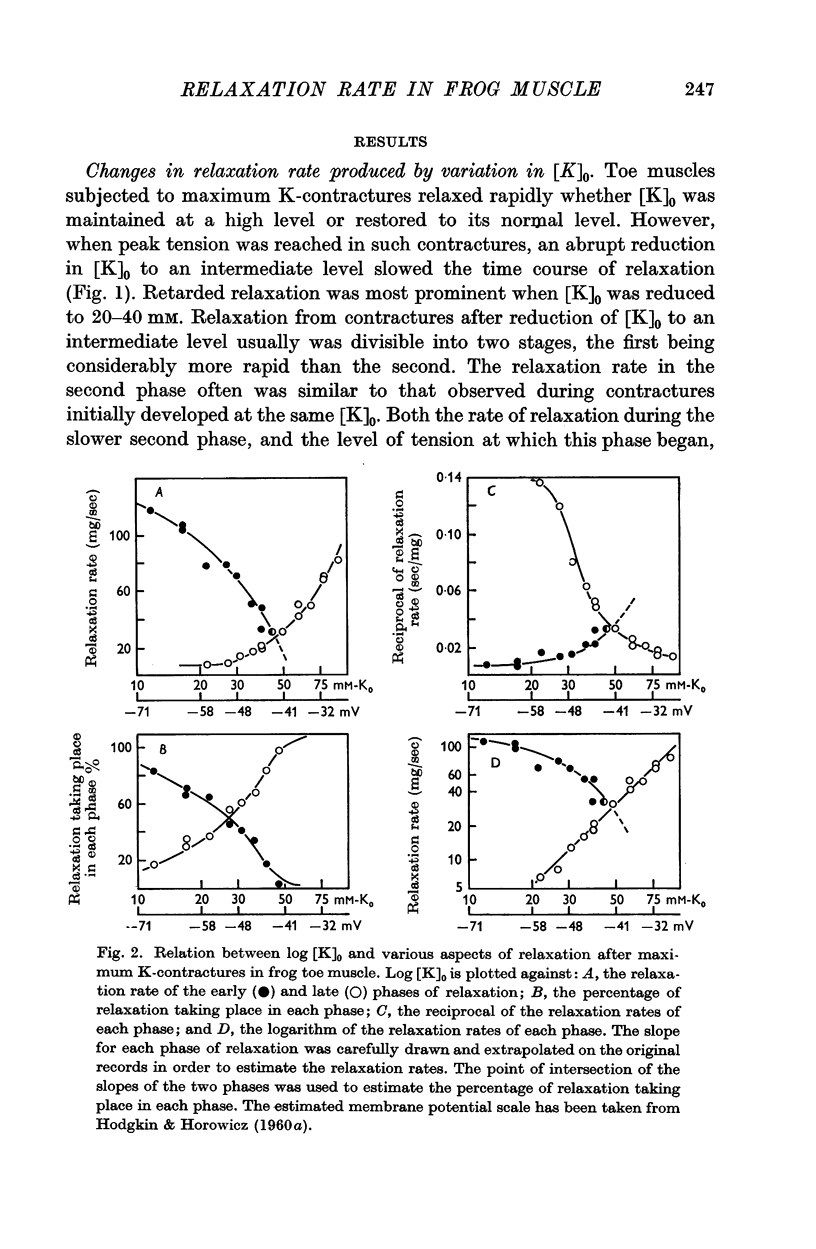
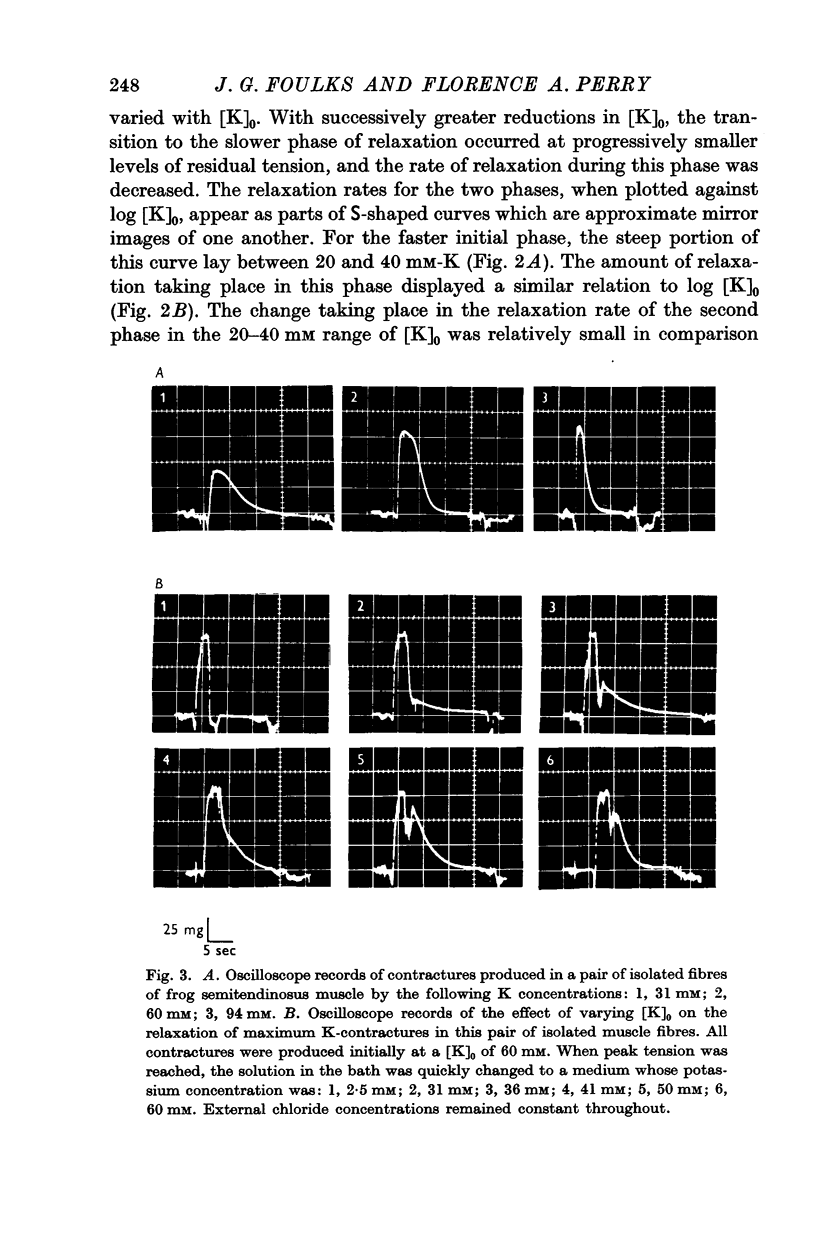
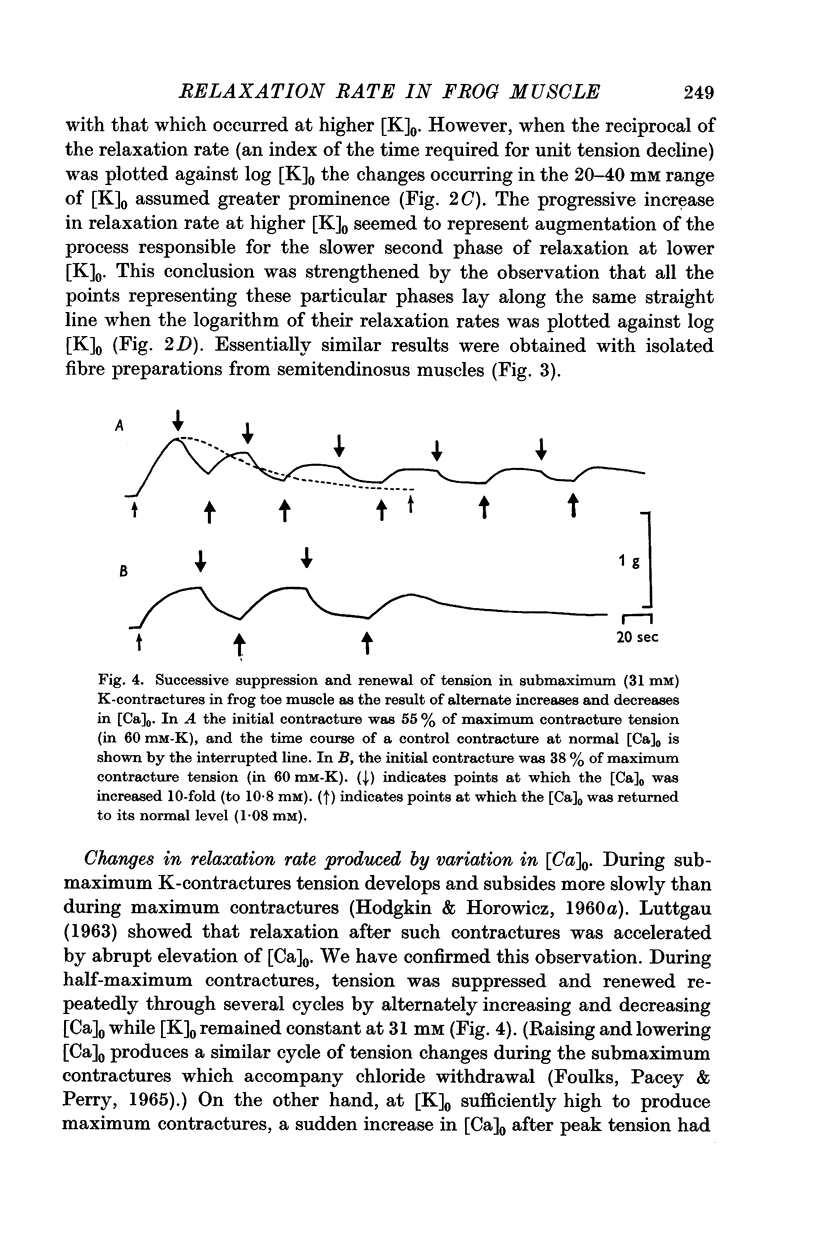
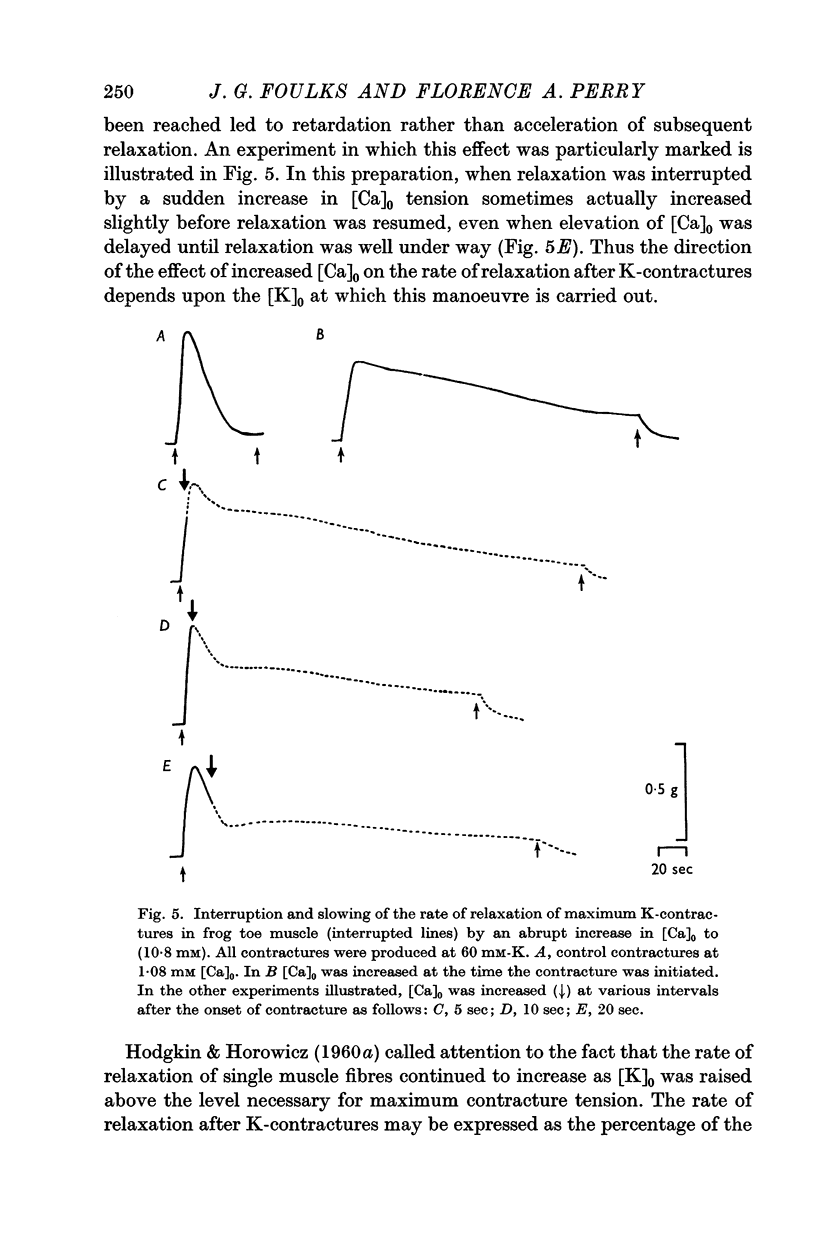
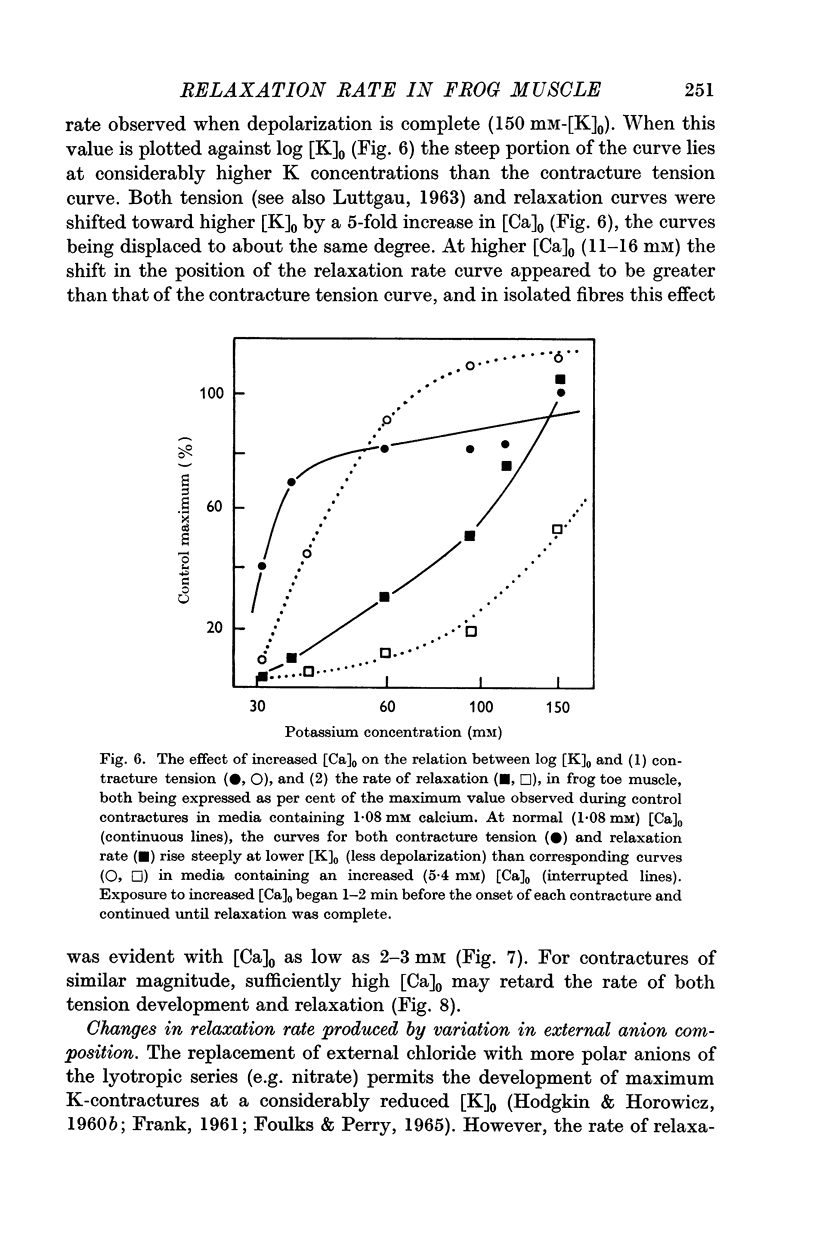
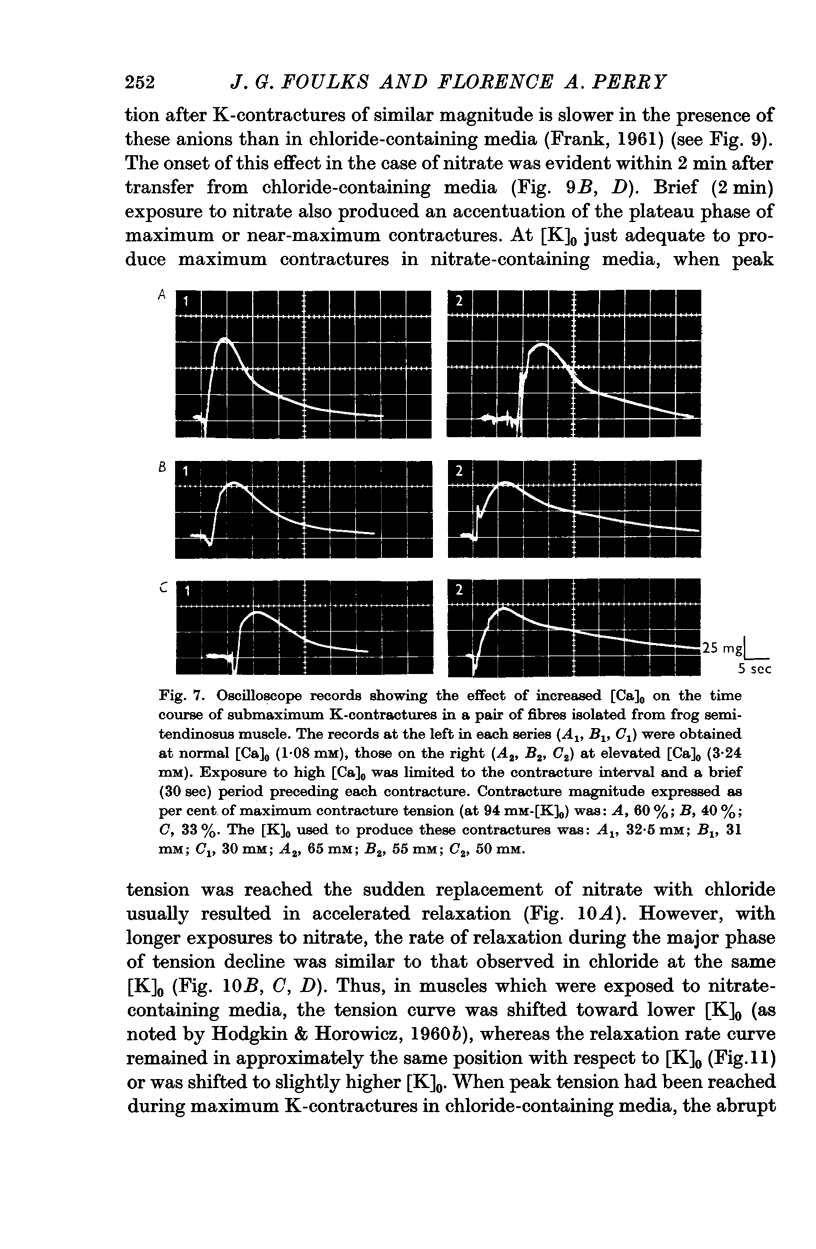
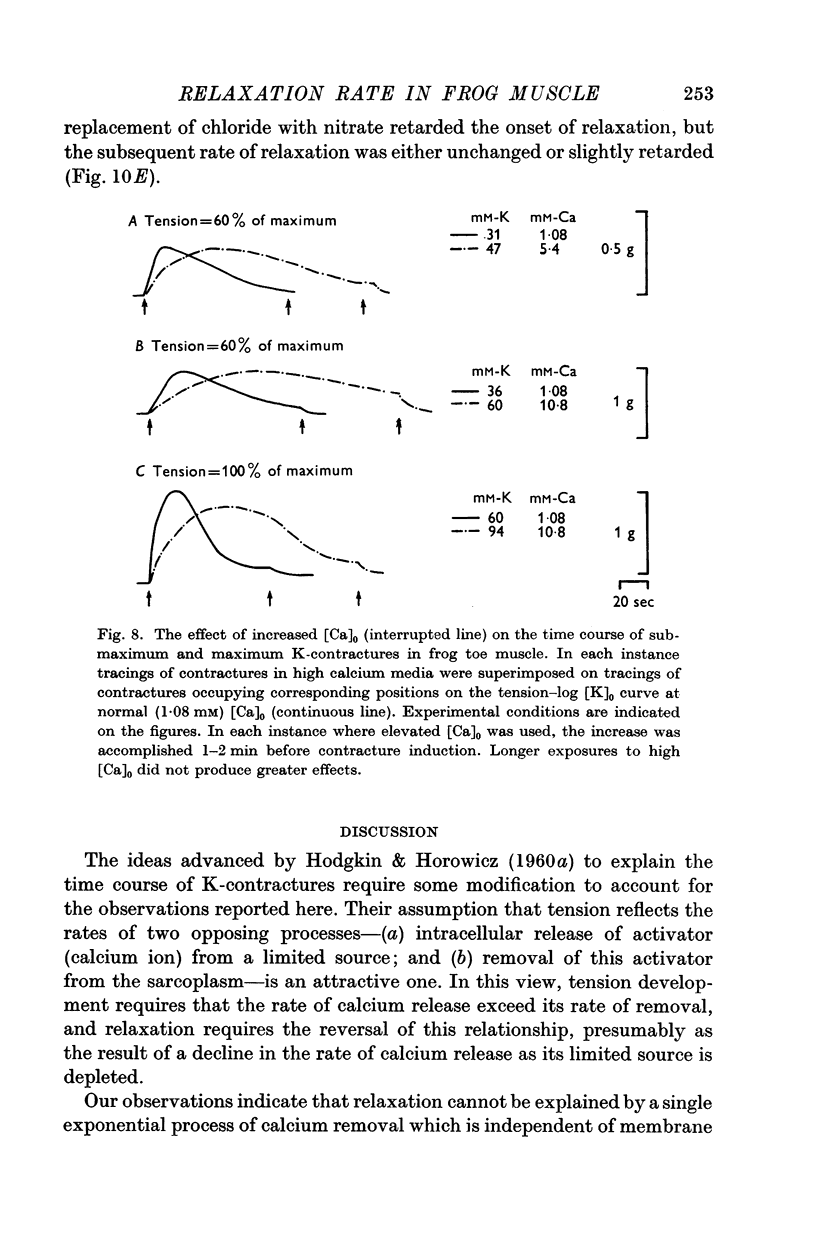
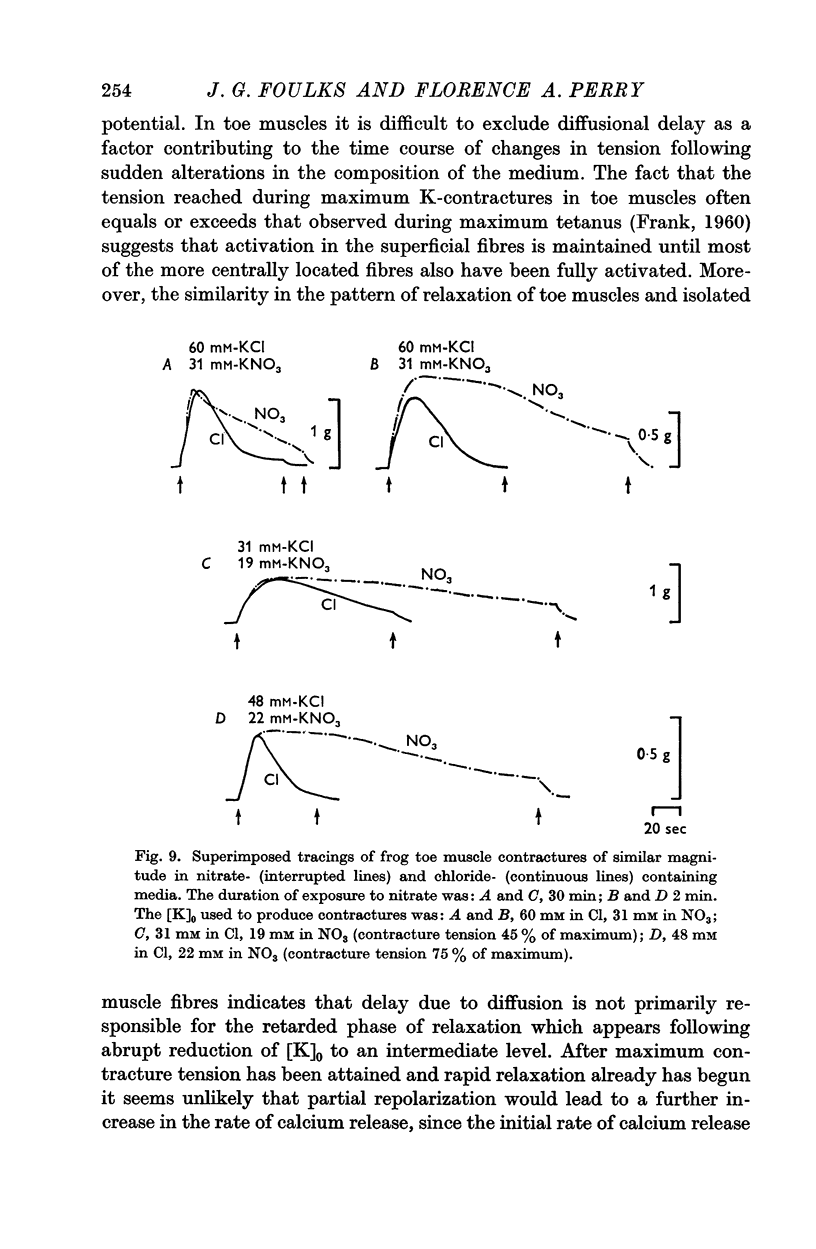
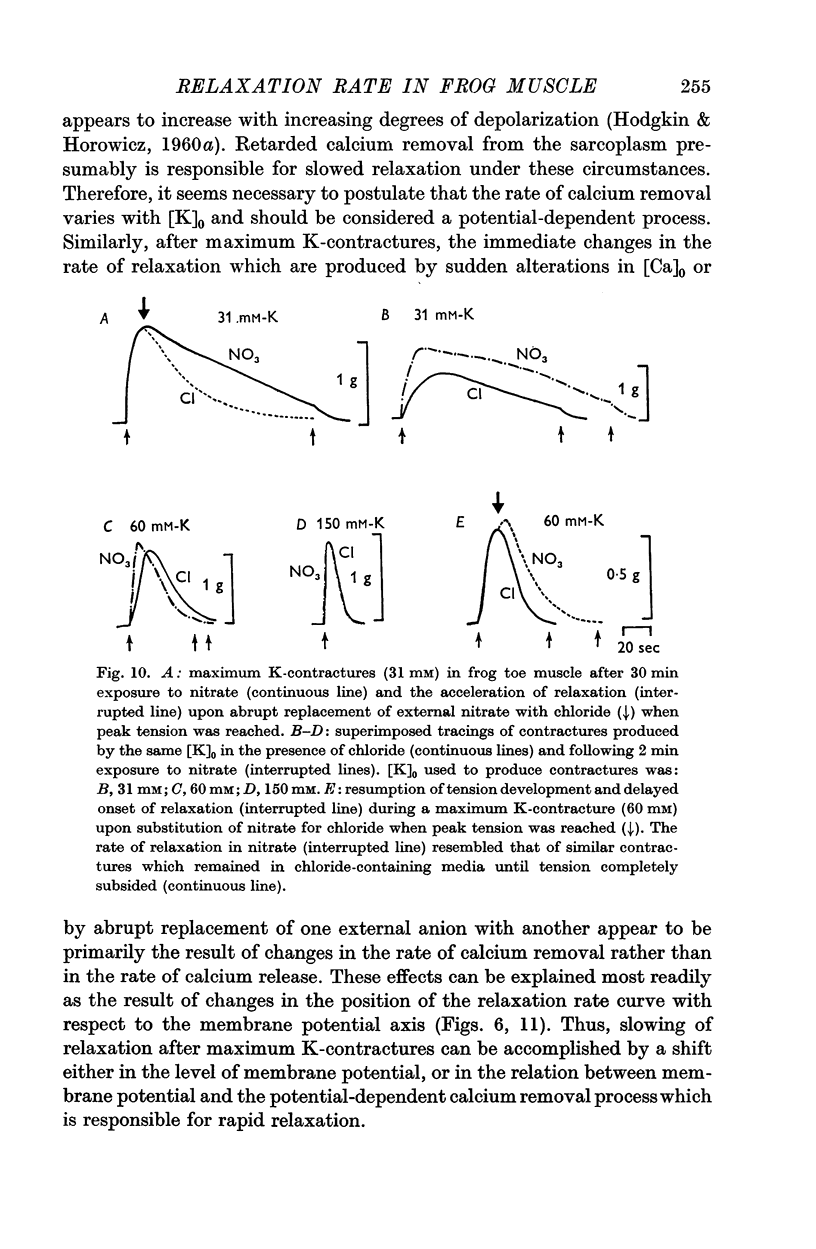
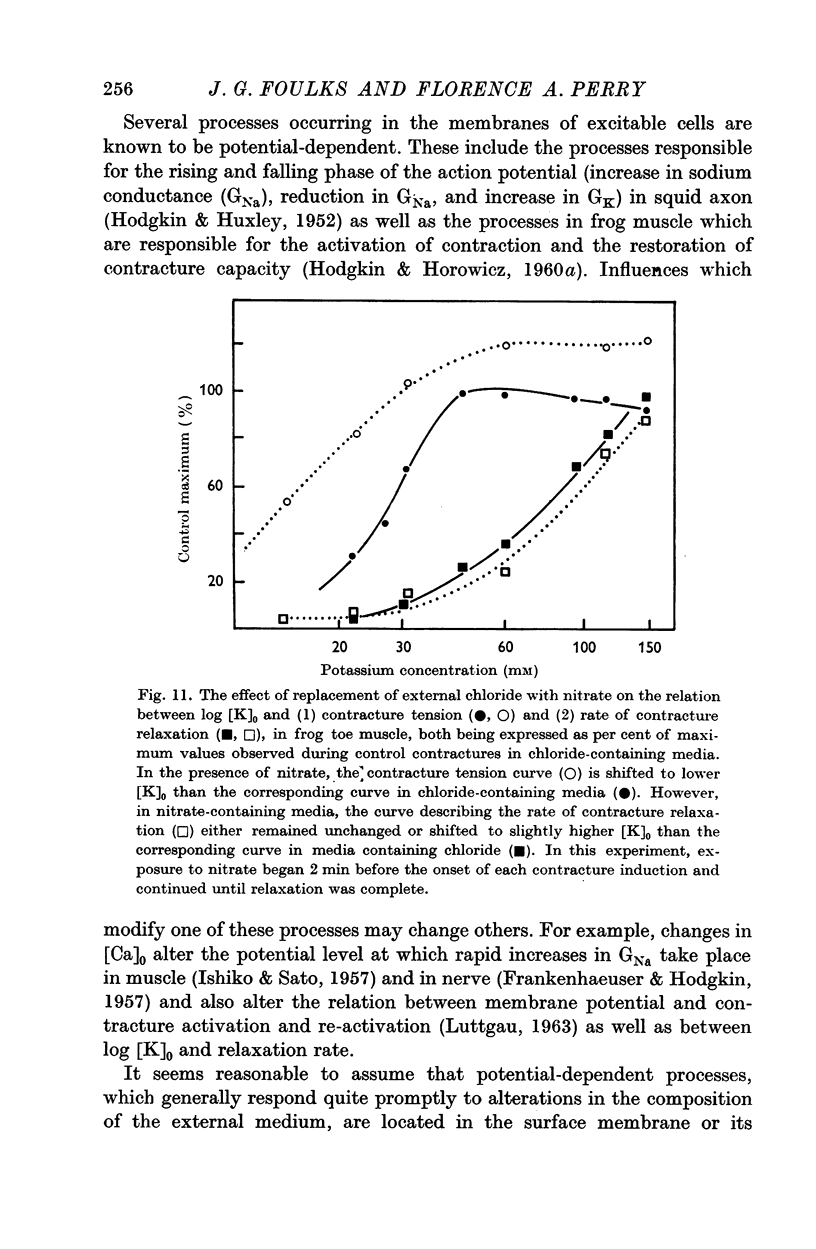
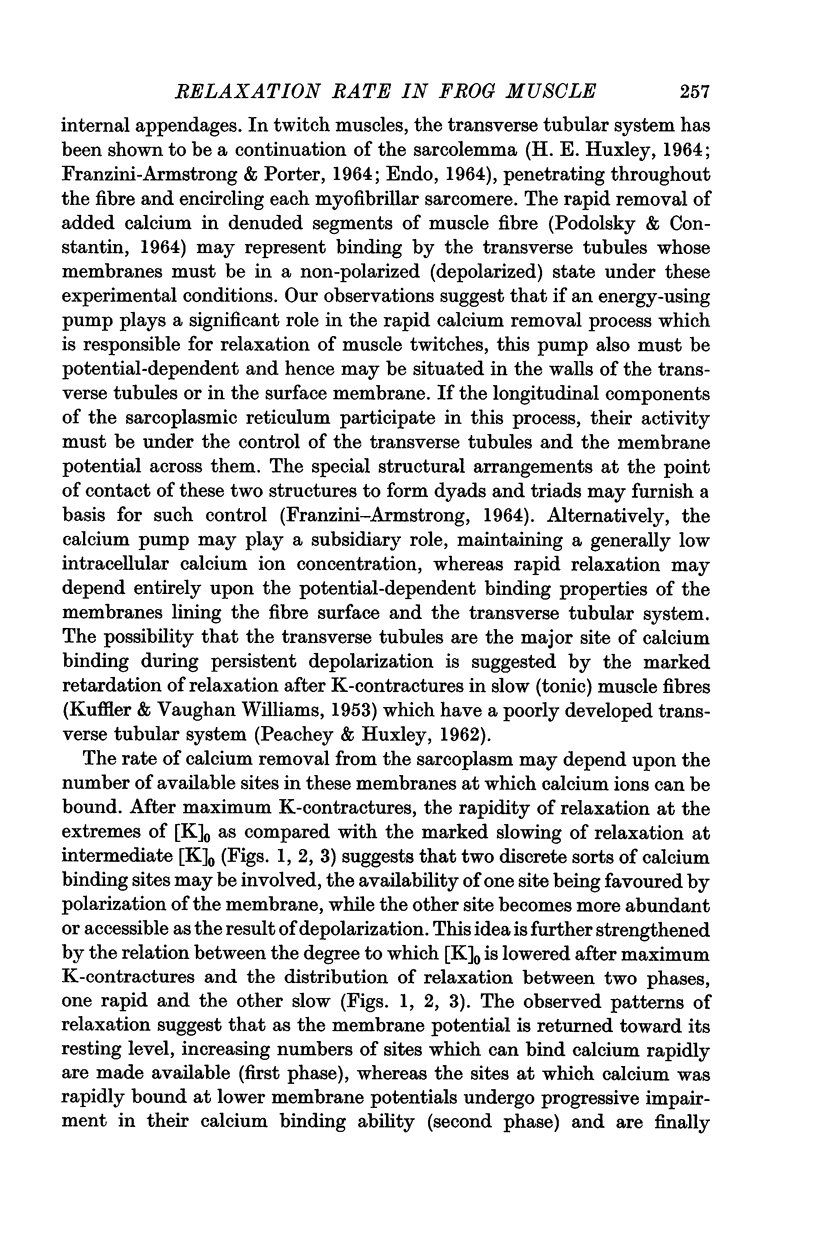
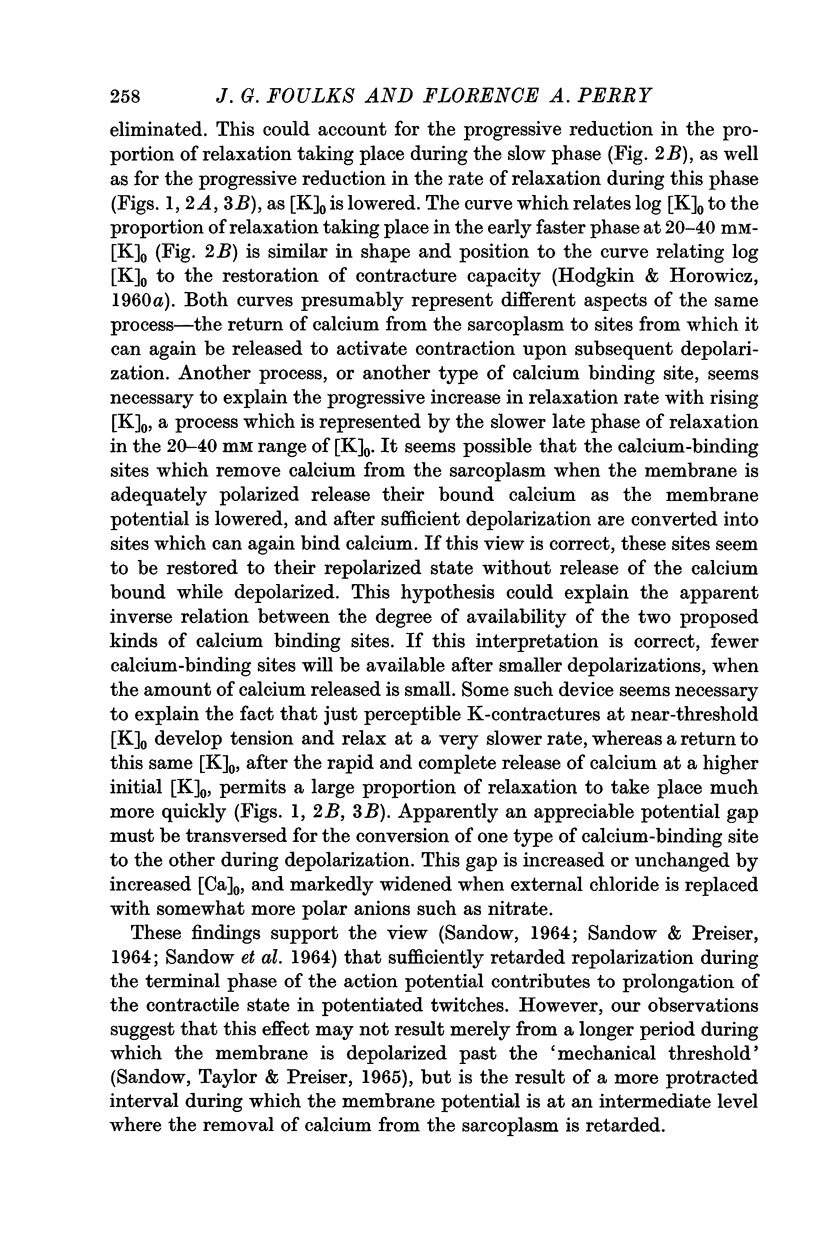

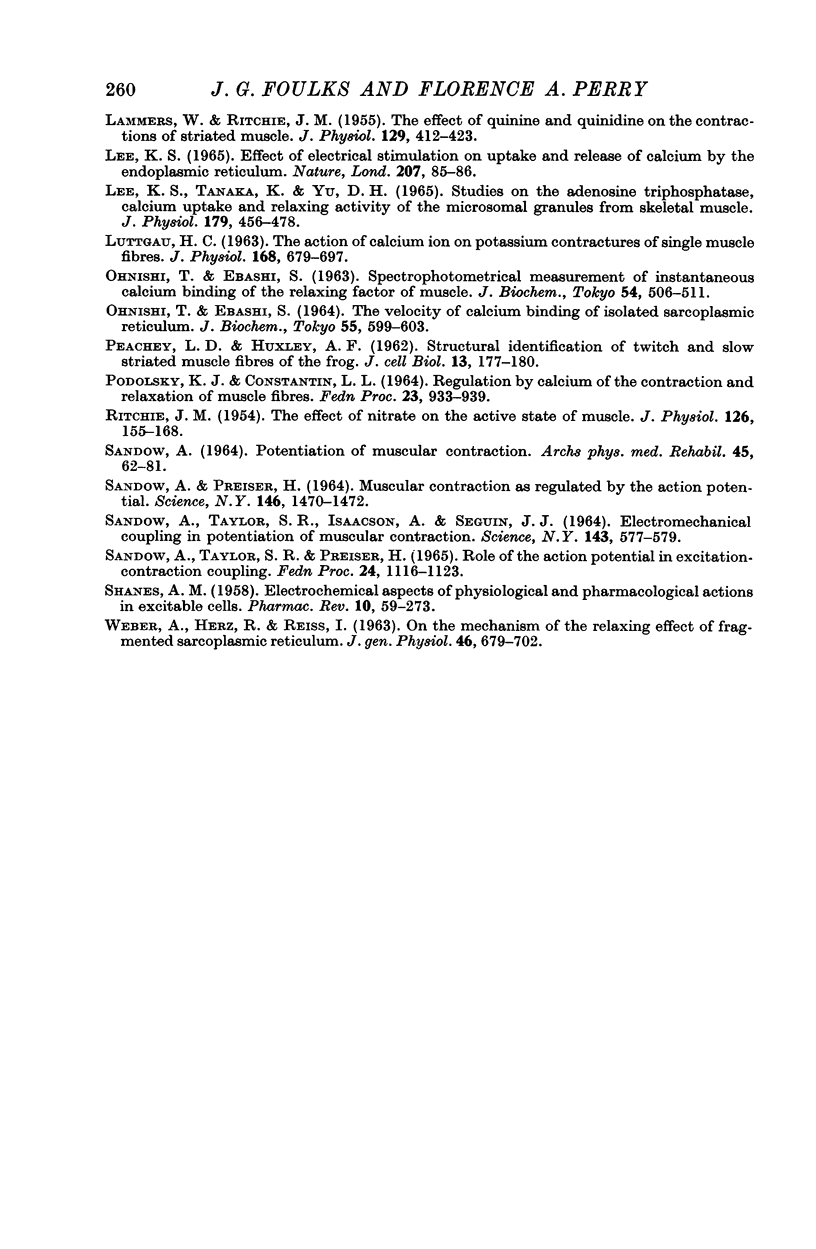
Selected References
These references are in PubMed. This may not be the complete list of references from this article.
- Boyle P. J., Conway E. J. Potassium accumulation in muscle and associated changes. J Physiol. 1941 Aug 11;100(1):1–63. doi: 10.1113/jphysiol.1941.sp003922. [DOI] [PMC free article] [PubMed] [Google Scholar]
- ENDO M. ENTRY OF A DYE INTO THE SARCOTUBULAR SYSTEM OF MUSCLE. Nature. 1964 Jun 13;202:1115–1116. doi: 10.1038/2021115b0. [DOI] [PubMed] [Google Scholar]
- FRANKENHAEUSER B., HODGKIN A. L. The action of calcium on the electrical properties of squid axons. J Physiol. 1957 Jul 11;137(2):218–244. doi: 10.1113/jphysiol.1957.sp005808. [DOI] [PMC free article] [PubMed] [Google Scholar]
- FRANK G. B. Maximum activation of the contractile mechanism in frog's skeletal muscle by potassium depolarization. J Physiol. 1960 Dec;154:345–353. doi: 10.1113/jphysiol.1960.sp006583. [DOI] [PMC free article] [PubMed] [Google Scholar]
- FRANK G. B. The influence of bromide ions on excitation-contraction coupling in frog's skeletal muscle. J Physiol. 1961 Apr;156:35–48. doi: 10.1113/jphysiol.1961.sp006656. [DOI] [PMC free article] [PubMed] [Google Scholar]
- FRANZINI-ARMSTRONG C. FINE STRUCTURE OF SARCOPLASMIC RETICULUM AND TRANVERSE TUBULAR SYSTEM IN MUSCLE FIBERS. Fed Proc. 1964 Sep-Oct;23:887–895. [PubMed] [Google Scholar]
- FRANZINI-ARMSTRONG C., PORTER K. R. SARCOLEMMAL INVAGINATIONS CONSTITUTING THE T SYSTEM IN FISH MUSCLE FIBERS. J Cell Biol. 1964 Sep;22:675–696. doi: 10.1083/jcb.22.3.675. [DOI] [PMC free article] [PubMed] [Google Scholar]
- Foulks J. G., Pacey J. A., Perry F. A. Contractures and swelling of the transverse tubules during chloride withdrawal in frog skeletal muscle. J Physiol. 1965 Sep;180(1):96–115. [PMC free article] [PubMed] [Google Scholar]
- HASSELBACH W., MAKINOSE M. [The calcium pump of the "relaxing granules" of muscle and its dependence on ATP-splitting]. Biochem Z. 1961;333:518–528. [PubMed] [Google Scholar]
- HILL A. V., MACPHERSON L. The effect of nitrate, iodide and bromide on the duration of the active state in skeletal muscle. Proc R Soc Lond B Biol Sci. 1954 Dec 15;143(910):81–102. doi: 10.1098/rspb.1954.0055. [DOI] [PubMed] [Google Scholar]
- HODGKIN A. L., HOROWICZ P. Potassium contractures in single muscle fibres. J Physiol. 1960 Sep;153:386–403. doi: 10.1113/jphysiol.1960.sp006541. [DOI] [PMC free article] [PubMed] [Google Scholar]
- HODGKIN A. L., HOROWICZ P. The effect of nitrate and other anions on the mechanical response of single muscle fibres. J Physiol. 1960 Sep;153:404–412. doi: 10.1113/jphysiol.1960.sp006542. [DOI] [PMC free article] [PubMed] [Google Scholar]
- HODGKIN A. L., HOROWICZ P. The influence of potassium and chloride ions on the membrane potential of single muscle fibres. J Physiol. 1959 Oct;148:127–160. doi: 10.1113/jphysiol.1959.sp006278. [DOI] [PMC free article] [PubMed] [Google Scholar]
- HODGKIN A. L., HUXLEY A. F. A quantitative description of membrane current and its application to conduction and excitation in nerve. J Physiol. 1952 Aug;117(4):500–544. doi: 10.1113/jphysiol.1952.sp004764. [DOI] [PMC free article] [PubMed] [Google Scholar]
- HUTTER O. F., NOBLE D. The chloride conductance of frog skeletal muscle. J Physiol. 1960 Apr;151:89–102. [PMC free article] [PubMed] [Google Scholar]
- HUXLEY A. F. MUSCLE. Annu Rev Physiol. 1964;26:131–152. doi: 10.1146/annurev.ph.26.030164.001023. [DOI] [PubMed] [Google Scholar]
- HUXLEY H. E. EVIDENCE FOR CONTINUITY BETWEEN THE CENTRAL ELEMENTS OF THE TRIADS AND EXTRACELLULAR SPACE IN FROG SARTORIUS MUSCLE. Nature. 1964 Jun 13;202:1067–1071. doi: 10.1038/2021067b0. [DOI] [PubMed] [Google Scholar]
- ISHIKO N., SATO M. The effect of calcium ions on electrical properties of striated muscle fibres. Jpn J Physiol. 1957 Mar 15;7(1):51–63. doi: 10.2170/jjphysiol.7.51. [DOI] [PubMed] [Google Scholar]
- KAHN A. J., SANDOW A. The potentiation of muscular contraction by the nitrate-ion. Science. 1950 Dec 1;112(2918):647–649. doi: 10.1126/science.112.2918.647. [DOI] [PubMed] [Google Scholar]
- KUFFLER S. W., VAUGHAN WILLIAMS E. M. Properties of the 'slow' skeletal muscles fibres of the frog. J Physiol. 1953 Aug;121(2):318–340. doi: 10.1113/jphysiol.1953.sp004949. [DOI] [PMC free article] [PubMed] [Google Scholar]
- Kwang Soo Lee Effect of electrical stimulation on uptake and release of calcium by the endoplasmic reticulum. Nature. 1965 Jul 3;207(992):85–86. doi: 10.1038/207085a0. [DOI] [PubMed] [Google Scholar]
- LAMMERS W., RITCHIE J. M. The action of quinine and quinidine on the contractions of striated muscle. J Physiol. 1955 Aug 29;129(2):412–423. doi: 10.1113/jphysiol.1955.sp005364. [DOI] [PMC free article] [PubMed] [Google Scholar]
- LUETTGAU H. C. THE ACTION OF CALCIUM IONS ON POTASSIUM CONTRACTURES OF SINGLE MUSCLE FIBRES. J Physiol. 1963 Oct;168:679–697. doi: 10.1113/jphysiol.1963.sp007215. [DOI] [PMC free article] [PubMed] [Google Scholar]
- Lee K. S., Tanaka K., Yu D. H. Studies on the adenosine triphosphatase, calcium uptake and relaxing activity of the microsomal granules from skeletal muscle. J Physiol. 1965 Aug;179(3):456–478. doi: 10.1113/jphysiol.1965.sp007673. [DOI] [PMC free article] [PubMed] [Google Scholar]
- OHNISHI T., EBASHI S. SPECTROPHOTOMETRICAL MEASUREMENT OF INSTANTANEOUS CALCIUM BINDING OF THE RELAXING FACTOR OF MUSCLE. J Biochem. 1963 Dec;54:506–511. doi: 10.1093/oxfordjournals.jbchem.a127823. [DOI] [PubMed] [Google Scholar]
- OHNISHI T., EBASHI S. THE VELOCITY OF CALCIUM BINDING OF ISOLATED SARCOPLASMIC RETICULUM. J Biochem. 1964 Jun;55:599–603. doi: 10.1093/oxfordjournals.jbchem.a127932. [DOI] [PubMed] [Google Scholar]
- PEACHEY L. D., HUXLEY A. F. Structural identification of twitch and slow striated muscle fibers of the frog. J Cell Biol. 1962 Apr;13:177–180. doi: 10.1083/jcb.13.1.177. [DOI] [PMC free article] [PubMed] [Google Scholar]
- PODOLSKY R. J., COSTANTIN L. L. REGULATION BY CALCIUM OF THE CONTRACTION AND RELAXATION OF MUSCLE FIBERS. Fed Proc. 1964 Sep-Oct;23:933–939. [PubMed] [Google Scholar]
- RITCHIE J. M. The effect of nitrate on the active state of muscle. J Physiol. 1954 Oct 28;126(1):155–168. doi: 10.1113/jphysiol.1954.sp005200. [DOI] [PMC free article] [PubMed] [Google Scholar]
- SANDOW A. POTENTIATION OF MUSCULAR CONTRACTION. Arch Phys Med Rehabil. 1964 Feb;45:62–81. [PubMed] [Google Scholar]
- SANDOW A., PREISER H. MUSCULAR CONTRACTION AS REGULATED BY THE ACTION POTENTIAL. Science. 1964 Dec 11;146(3650):1470–1472. doi: 10.1126/science.146.3650.1470. [DOI] [PubMed] [Google Scholar]
- SANDOW A., TAYLOR S. R., ISAASON A., SEGUIN J. J. ELECTROCHEMICAL COUPLING IN POTENTIATION OF MUSCULAR CONTRACTION. Science. 1964 Feb 7;143(3606):577–579. doi: 10.1126/science.143.3606.577. [DOI] [PubMed] [Google Scholar]
- SHANES A. M. Electrochemical aspects of physiological and pharmacological action in excitable cells. II. The action potential and excitation. Pharmacol Rev. 1958 Jun;10(2):165–273. [PubMed] [Google Scholar]
- Sandow A., Taylor S. R., Preiser H. Role of the action potential in excitation-contraction coupling. Fed Proc. 1965 Sep-Oct;24(5):1116–1123. [PubMed] [Google Scholar]
- WEBER A., HERZ R., REISS I. On the mechanism of the relaxing effect of fragmented sarcoplasmic reticulum. J Gen Physiol. 1963 Mar;46:679–702. doi: 10.1085/jgp.46.4.679. [DOI] [PMC free article] [PubMed] [Google Scholar]


